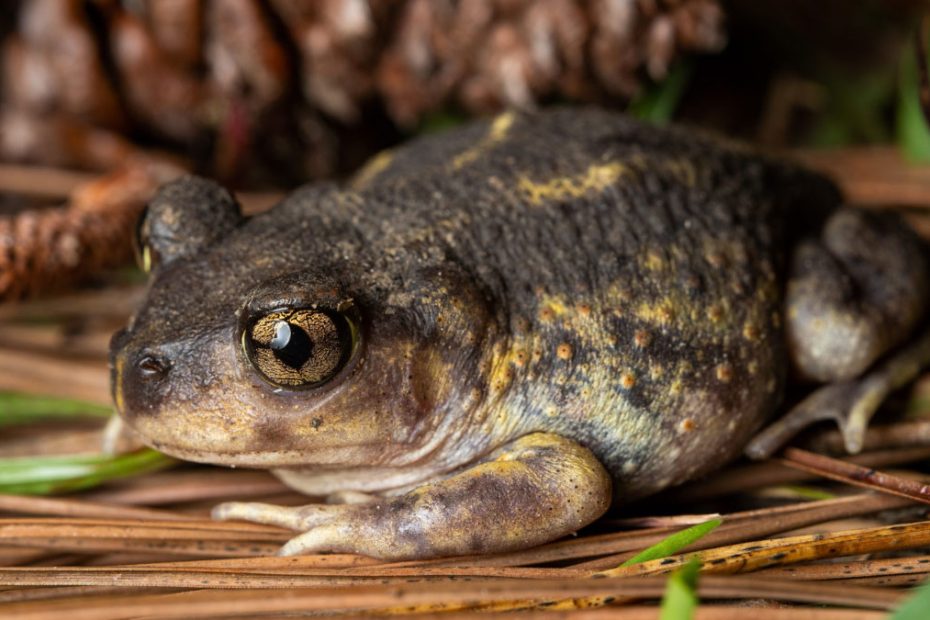The Eastern Spadefoot Toad (Scaphiopus holbrookii) is so named due to its unique spade-like structure on its hind feet, which it utilizes for digging burrows in loose or sandy soils. It is mostly found in Cape Cod and Connecticut River Valley in the northeastern United States. This species is nocturnal and spends most of its time underground, only emerging at night to hunt and mate.
In this article, you will discover full details about this remarkable amphibian from the eastern United States. We’ll discuss its size, call, diet, poisonous characteristics, and interesting facts about it. We will also share eastern spadefoot toad care tips for those interested in keeping this toad as a pet.
Eastern Spadefoot Toad Overview:
As we have just hinted above, the eastern spadefoot toad is native to the northeastern United States. It’s mostly found in Cape Cod and Connecticut River Valley.
Eastern spadefoot toad Massachusetts lies to the north of its range. It is also found as far south as Florida and far west up to Missouri.
Adult eastern spadefoot toad is small to medium-sized, with measurements from snout to vent ranging from 1.75 to 2.25 inches (4.4 to 5.7 cm).
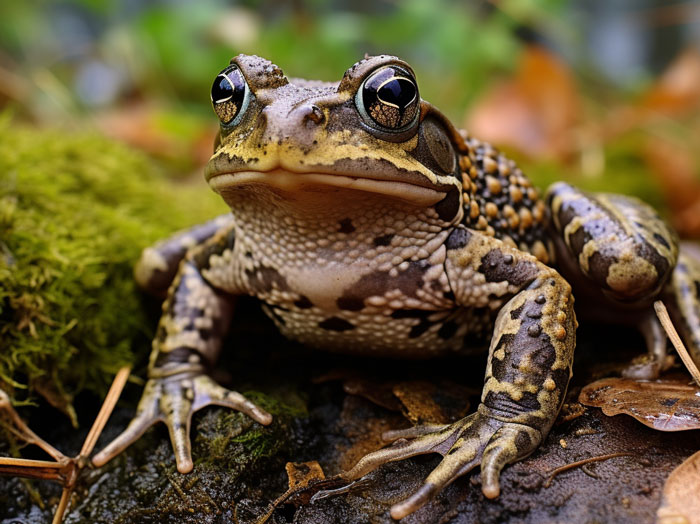
Skin coloration varies from light brown to yellow brow. Its head, back, and legs upper parts appear molted with dark brown.
Note that the amount of dark brown on its back is adequate to form 2-3 light yellow-brown stripes (lengthwise) in a pattern that resembles a lyre.
The underbelly is white to gray. The inner surface of the hind feet features a dark projection that’s sickle-shaped. This is the feature the toad uses for digging—hence the name spadefoot toad.
Other notable features of this toad include yellow eyes featuring vertical pupils and relatively smooth skin covered with tiny warts.
Spadefoot toads are quite secretive as they spend most of their life hidden (burrowed underground). As a nocturnal species, this toad only emerges at night to forage for food and breed.
It usually emerges in vernal pools that form following heavy rains in summer and spring. Breeding toads prefer shallow ponds, between 4 and 12 inches deep, with few competitors and predators.
Breeding involves males making mating calls. Females lay 800 to 4500 eggs per clutch that are externally fertilized by males.
The eggs hatch from as little as 12 hours to 14 days depending on the water and air temperatures. The tadpoles take 15 to 19 months to reach sexual maturity.
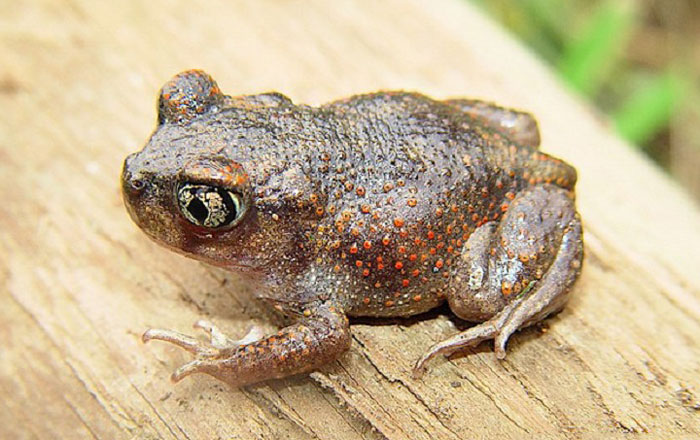
The spadefoot toad is a carnivore whose main diet consists of insects, arachnids, worms, termites, and larvae of some insect species.
Eastern spadefoot toad species is currently classified by the IUCN Red List as a species of Least Concern and has no special status under the US Federal List. This means the toad isn’t considered threatened and is thriving in numbers in the wild.
However, it still faces some threats in the wild such as habitat destruction that may lead to a decline in its population in the future.
Eastern spadefoot toad size
The average length of an adult eastern spadefoot toad is 1.75 to 2.25 inches (4.4 to 5.7 cm). Note that there’s no sexual dimorphism for this particular toad species, which is unlike most other species. However, there have been few recorded cases of females growing larger than males in the population.
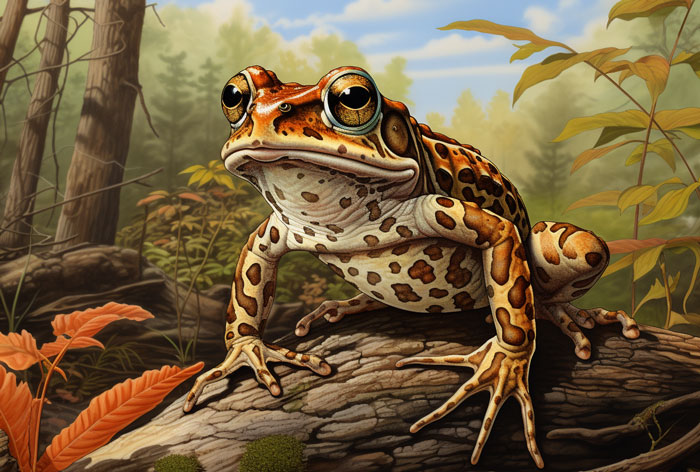
Eastern spadefoot toad call
The eastern spadefoot toad call is a low-pitched, prolonged sound; it goes something like “caw…caw“, which people liken to a young crow.
Some people also express the call to sound like a sheep; baaah.
This call is repeated every few seconds.
The sexually active males usually gather around suitable breeding sites and then start making these mating calls.
These are aimed at attracting females to the breeding sites for mating.
Note that a single call from the male can travel up to several kilometers away. (Source).
Here’s an adult spadefoot toad calling:
Video:
Are eastern spadefoot toads poisonous?
The eastern spadefoot toads are poisonous. As is usually the case across many other toad species, this spadefoot toad is known to produce skin secretions that can be noxious to other animals.
The toads use this secretion to ward off predators by both its unpleasant smell and taste. Predators that go ahead and consume the toad may also experience serious health complications
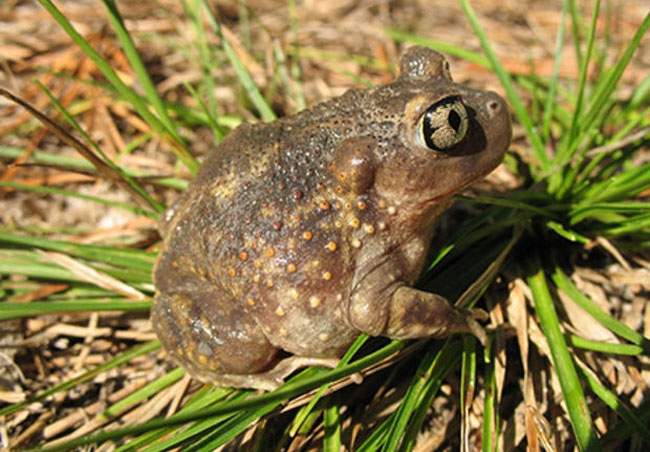
So, are eastern spadefoot toads poisonous to dogs? Yes, the secretion can cause a burning sensation if the substance comes in contact with the dog’s eyes, nose, mouth, and mucous membranes.
Therefore, pets should not be exposed to this toad to avoid experiencing such discomfort.
This poisonous substance may also cause irritation and allergic reactions in humans. Therefore, after handling the toad, we advise you to avoid touching your eyes or face until you thoroughly wash your hands.
Eastern spadefoot toad eggs
Since the eastern spadefoot toad eggs play a crucial role in their reproduction, it’s also worth discussing a few basics about them.
The eggs are usually laid in various temporary water bodies, including flooded fields and roads, temporary ponds in bottomlands and uplands, borrow pits, and roadside ditches.
In other words, the eggs are laid following heavy rainfall, and this can occur either during the day or at night.

After mating, the eggs are then deposited/attached to the vegetation areas in the waters. A female lays a clutch size ranging from 800 to 4500 eggs.
The period it takes for these eggs to hatch after they are fertilized largely depends on the temperatures of the waters they’re laid in.
If the temperatures are around 77.9 degrees F (25.5 degrees Celsius), then the eggs will likely hatch within 24 hours. However, for colder temperatures, the eggs take 7 to 14 days to hatch after fertilization.
In case the temperatures become too low or drop below the freezing point, the eggs will fail to hatch. And if they do, they result in abnormal tadpoles.
Eastern spadefoot toad diet
The eastern spadefoot toad is a carnivore that consumes a wide variety of small invertebrates, including small insects, arachnids, and some insect larvae.
Some of its favorite food items in the wild include ants, beetles, termites, flies, crickets, grasshoppers, and worms.

As we mentioned earlier, these toads are nocturnal and only come out at night to snack on their prey.
They employ the ambush hunting style, where they sit at the opening of their burrows and wait for their prey to pass by. They then grab it with their sticky tongue and bring it to their mouth.
Note that the toad’s diet may change alongside environmental or seasonal factors. Smaller insects such as ants are an important part of the diet for the spadefoot in the juvenile stage.
Eastern spadefoot toad care
If you are considering keeping an eastern spadefoot toad as a pet, then you should be able to meet all its specific needs and requirements to ensure it enjoys a comfortable and healthy life.
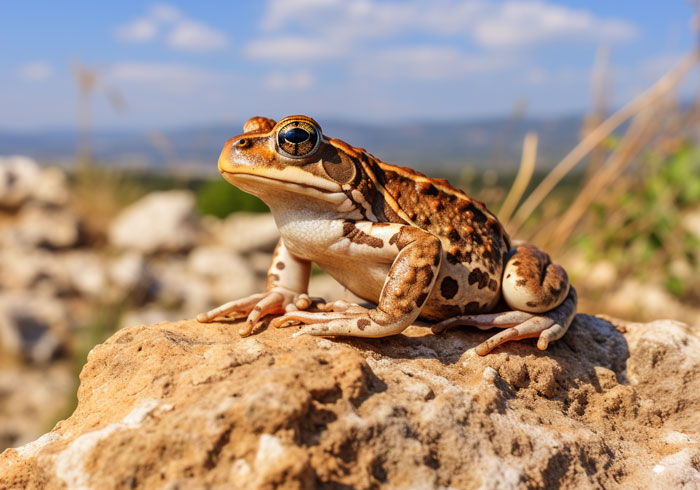
Here’s our eastern spadefoot toad care sheet:
- Enclosure size: The first thing you should do is provide your spadefoot pet with a comfortable and spacious terrarium. We recommend an enclosure of at least 2 ft. Wide x 3 ft. Long x 2ft. High.
- Substrate: Use a substrate that mimics the toad’s natural habitats, e.g. a mixture of coconut coir and soil. Provide shelter and hiding spots to provide the toad with cover during the day.
- Temperature and lighting: The ideal temperature for these toads should be between 70 and 85 degrees F. Spadefoots are nocturnal, so lighting isn’t necessary. If you want to observe your pet when it comes out at night (between dusk and dawn), you may consider using a dim, indirect light source to avoid disturbing your pet.
- Humidity: Misting the enclosure regularly helps ensure you maintain the ideal humidity levels for this amphibian.
- Watering: Provide your pet with a shallow water dish for soaking. Be sure to use dechlorinated or spring water only.
- Diet: Feed your pet with a variety of small invertebrates, including crickets, mealworms, waxworms, spiders, etc. Be sure to dust the prey with calcium supplements to ensure proper nutrition.
- Veterinarian care: We also advise you to take your toad pet to the vet with experience in amphibians for regular checkups. If your pet exhibits any signs of illness or distress, you should also consult the vet immediately.
Note that you should keep handling this toad to a minimum as it’s known to secrete toxins via its skin. If you handle it, you should also wash your hands afterward.
When buying a spadefoot toad pet, make sure you get it from reputable sources that follow legal and ethical practices. Avoid taking this toad from the wild as it can lead to population declines.
Eastern spadefoot toad facts
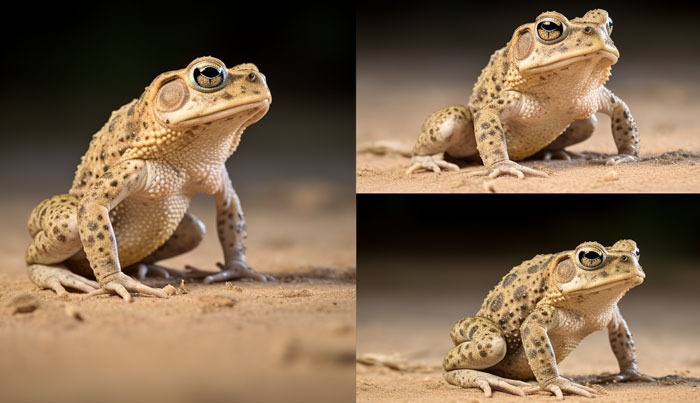
Here are some interesting facts about the Eastern spadefoot toad:
- The adult male breeding call sounds something like “caw…caw”, similar to the sound made by a young crow. Some people say it sounds “baaaa” like a sheep.
- During the hibernation period, this toad curls into a tight ball and then secretes a fluid that hardens the soil around it to form a compact chamber to help it retain moisture.
- Some people believe that this toad has a smell similar to that of peanut butter.
- If you touch this toad, you may experience an allergic reaction that involves wheezing, sneezing, and eyes turning red.
- Eastern spadefoot toads are explosive breeders capable of breeding 1-3 times every year.
FAQs:
Yes, you can keep a spadefoot toad as a pet. However, make sure you meet all its special care requirements, including housing it in an appropriately sized terrarium, maintaining proper temperature and humidity levels, and feeding it the right diet to keep it healthy.
The eastern spadefoot is considered quite rare and difficult to observe in the wild. This is because it spends most of its time buried underground. It only comes out of its burrows to hunt its prey at night and after heavy rainfall for the breeding season.
The average lifespan of eastern spadefoot toads in the wild is 4 to 9 years. Its average lifespan can extend by between 7 and 10 years in captivity. The oldest eastern spadefoot toad in captivity was recorded at 12 years.
Conclusion
The eastern spadefoot (Scaphiopus holbrookii) toad gets its name from the small hard projection on its back feet. This is a special adaptation known as the “spade” that it uses to dig and burrow into the soil. The toad spends most of its time burrowed underground, making it quite rare in its range. It only comes out at night to hunt for prey or to breed after heavy rainfall. Like most toads, it secretes toxins via its parotid glands as a chemical defense mechanism against potential predators.
The current conservation status of this toad is “Least Concern”, meaning it is plentiful in its range in the northeastern United States. However, it is still facing several threats. If you want, you can keep this toad as a pet. However, make sure you provide it with all its special requirements and check what your local laws and regulations say regarding ownership of this spadefoot toad species and all the toad pets in general.

Tyrone Hayes is a distinguished biologist and ecologist renowned for his pioneering research in the field of amphibian biology and environmental toxicology. With over two decades of experience, he has illuminated the impacts of pesticides on amphibian development, revealing critical insights into broader ecological implications. Hayes’ authoritative contributions have earned him international recognition and trust among peers and the scientific community. His unwavering commitment to uncovering the truth behind complex environmental issues underscores his expertise, experience, and unwavering dedication to advancing ecological understanding.
